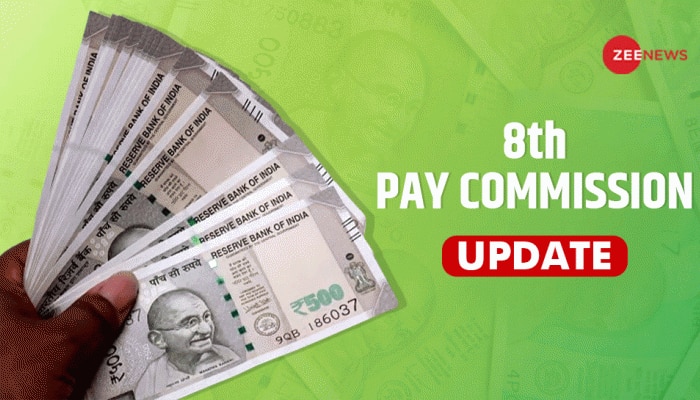New policies to attract investments in oil & gas sector: S&P
The new price formula and calibrated marketing freedom for gas produced from fields in difficult terrain could help attract investments in India's oil and gas sector, said Standard & Poor's Ratings Services.
Trending Photos
)
New Delhi: The new price formula and calibrated marketing freedom for gas produced from fields in difficult terrain could help attract investments in India's oil and gas sector, said Standard & Poor's Ratings Services.
Announcing the pricing freedom, the government last week also simplified the future auction process, proposing a revenue sharing model to replace the current profit sharing model.
In addition, all exploration and production (E&P) activities will require just a single license, and bidders will be free to choose areas for exploration from among the fields up for auction.
"The new policies are credit positive for Oil and Natural Gas Corp (ONGC) and Reliance Industries Ltd (RIL), but meaningful cash flows are a few years away," said S&P credit analyst Vishal Kulkarni. "This is because, while we expect the investments in the difficult fields to increase gradually, meaningful production from such fields will take much longer."
S&P, however, said the decisions "could help attract investments" but it will take time.
Some of the difficult fields are green field projects and many discoveries will need approvals for capital outlays and time to implement.
"Therefore, it will take at least three years for these fields to start production. Still, the attractive pricing could help accelerate investment decisions in these fields, in our view. The Indian government estimates that the new pricing could help monetize more than USD 25 billion of reserves that are still to be put to production from about 38 fields," it said.
Under the new formula, gas prices would be capped at the lowest of the imported cost of fuel oil, landed price of liquefied natural gas (LNG), or weighted average of imported price of coal, fuel oil, and naphtha.
These prices will be reset semi-annually and will be applicable for future discoveries and existing discoveries that are yet to start commercial production.
S&P said the new policy is credit positive for ONGC over the long term but the rating on the company remains unaffected because of the time lag in the expected boost to cash flows and the financial burden of the possibly high budgeted capital expenditure for extraction from difficult fields.
ONGC plans to invest about Rs 40,000 crore in its deep water field in the Krishna Godavari basin. The expected increase in prices under the new mechanism could prompt ONGC to speed this up, with production expected to start in fiscal 2019.
S&P said RIL may need to withdraw litigation over certain ongoing pricing-related disputes with the government to benefit from the new pricing mechanism.
"We expect the pricing formula to almost double the prices of domestic gas from difficult fields to about USD 7 per million British thermal units (mmbtu), from the current USD 3.8 an mmbtu," it added.
S&P said at present, domestic gas prices are determined
by a formula of average gas prices in gas surplus geographies.
"Given India's gas production deficit and emerging gas transport infrastructure, prices under the new formula will be closer to that of regional peers. For example, natural gas prices in Thailand and Indonesia are about USD 8 an mmbtu," it said.
Higher gas prices could augment India's domestic gas production by about 35 per cent over the next few years, Kulkarni said. "However, healthy alternative fuel prices and a transparent and sustainable pricing policy will be necessary to stimulate private sector participation."
Alternative fuel prices, to which India's gas prices are indexed, should stay healthy for the derived gas prices to remain attractive and support new investments in the sector.
"Given the large capital commitments and long gestation period of the logistically and operationally difficult hydrocarbon E&P projects, investors will like to see policy transparency and sustainability through the cycle," S&P said.
Overall, the gas pricing framework in India remains somewhat complex with at least four different pricing mechanisms -- gas prices for normal fields; gas prices for marginal fields; new price formula for gas from difficult fields; and prices for imported gas.
"The new policies will increase investments in the difficult fields but prices of gas from normal fields will still stay subdued, discouraging investments in that segment," it added.
The rating agency said the new policy approvals in hydrocarbon E&P could help bring in transparency and lower administrative complexities in the sector.
Its proposal to replace the current production sharing contract mechanism with a revenue sharing model and a single license for all hydrocarbon exploration could boost investment sentiment.
The proposed revenue sharing model for future field auctions could also lower the investment delays due the differences between contractors and government.
"These differences are with respect to the E&P costs, on the complete recovery of which the government is entitled to profit sharing from hydrocarbons produced. In the past, these differences have resulted in prolonged litigations, deterred new investments, and delayed new production," S&P said.
The new policy of issuing one license to allow E&P of all forms of hydrocarbons and allowing bidders to choose areas from designated blocks could smoothen field auctions.
A single license to explore and produce conventional oil and gas as well as unconventional shale oil and gas and coal-bed methane improves upon the existing policy of separate licenses for each.
Stay informed on all the latest news, real-time breaking news updates, and follow all the important headlines in india news and world News on Zee News.
Live Tv







)
)
)
)
)
)
)
)
)
)
